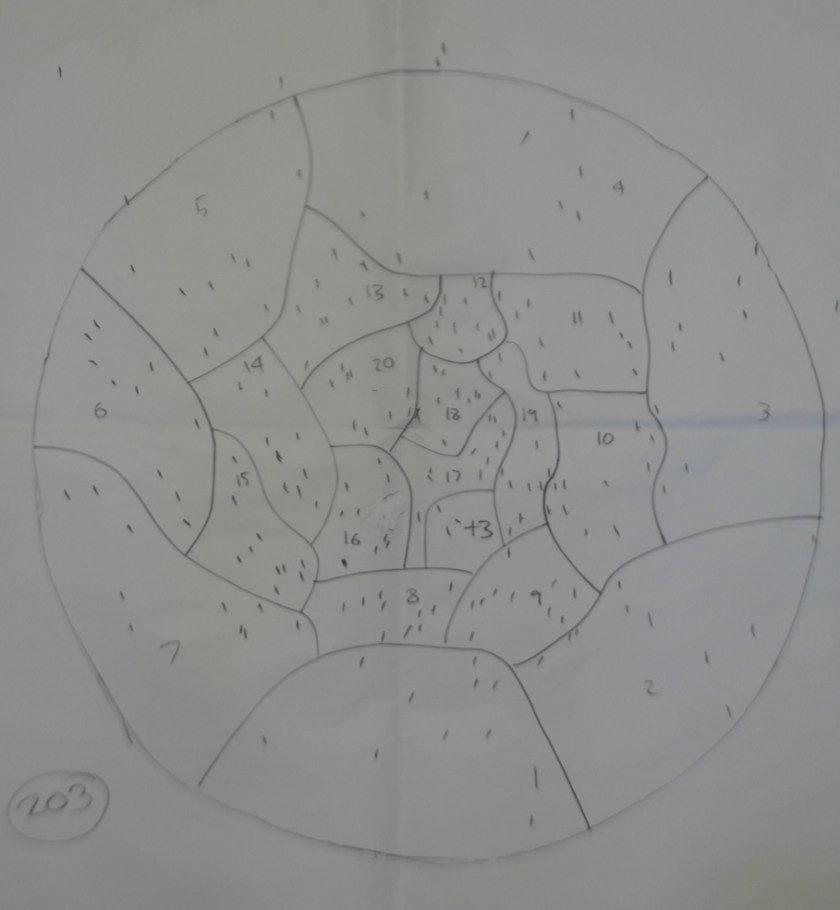Performance Data
| Date | Range | Choke (Nominal) | 30" Circle Impacts (Total) | Performance (Nominal) |
|---|---|---|---|---|
| 19/11/2017 | 20 Yards | 0.015" (Modified) | 203 (227) | 89% (Improved Cylinder) |
| 19/11/2017 | 30 Yards | 0.015" (Modified) | 121 (227) | 53% (< Cylinder) |
| 19/11/2017 | 30 Yards | 0.015" (Modified) | 122 (227) | 54% (< Cylinder) |
| 19/11/2017 | 30 Yards | 0.015" (Modified) | 129 (227) | 57% (< Cylinder) |
| 19/11/2017 | 30 Yards | 0.020" (Improved Modified) | 135 (227) | 59% (< Cylinder) |
| 19/11/2017 | 30 Yards | 0.020" (Improved Modified) | 101 (227) | 44% (< Cylinder) |
| 19/11/2017 | 40 Yards | 0.020" (Improved Modified) | 77 (227) | 34% (< Cylinder) |
| 19/11/2017 | 40 Yards | 0.020" (Improved Modified) | 67 (227) | 30% (< Cylinder) |
| 19/11/2017 | 40 Yards | 0.025" (Full) | 56 (227) | 25% (< Cylinder) |
| 19/11/2017 | 40 Yards | 0.025" (Full) | 59 (227) | 26% (< Cylinder) |
Performance Analysis
Considering our previous experience with cartridges in this range, we did not expect the Italian #8 version of the Fiocchi “Magnum” cartridge to display outstanding performance. In fact, it does not, but the smaller shot size does provide enough pattern density to get the cartridge over the 30-yard mark, which makes it more capable than the other versions, containing Italian #7½ and #6 shot, that the SmallBoreShotguns team have tested.
It has long been our suspicion that the antimony content of the lead used in this (and indeed in most .410 cartridges) is low. Short-range percentage performance is significantly damaged, without much evidence of pellets falling outside the circle but on the pattern paper, which suggests that a large number of fliers are generated as the shot column leaves the barrel.
A failure to achieve a 20-yard pattern performance of 95% through any choke is usually an indicator of significant scrubbing and crushing of the shot. This explains both early losses and – as pellet velocity is lost at range – the dramtic drop in performance from 30 to 40 yards, where the expected 20% loss of pattern density was exceeded in most cases.
As usual, the tightest chokings appeared to be damaging to performance with this cartridge. The 40-yard patterns shot with the “full” choke (having 0.025″ constriction, which is rather more than “full” in most serious .410 shotgunners’ estimations) were significantly inferior to the patterns shot with the nominal “¾” choke (0.020″ constriction).
We further suggest that the aforementioned effect was visible at 30 yards between that 0.020″ choke and the looser 0.015″ choke, where the pattern of 135 (image below) was pleasing but most likely anomalous. The other pattern of 101 appeared blown and lacked central density in the same way as the 0.020″ / 40-yard pattern displayed below. The wide variation between results, compared with the relative consistency of the patterns for the 0.015″ choke support this theory, though more testing will be required to prove or disprove it.
Ultimately, this is a “just-about-30-yard” cartridge with a mathematically-determined maximum range of 31-32 yards for a standard of 120 pellets in the circle. Given the smaller shot size, equivalent to a UK #7½, it probably represents a reasonably balanced loading in it’s own right but we have observed superior performance (and far less punishing recoil) from other alternatives which (potentially) give up to 25% more range. Of the three Fiocchi cartridges we have tested to date, this should be the cartridge of choice.
Example Patterns



